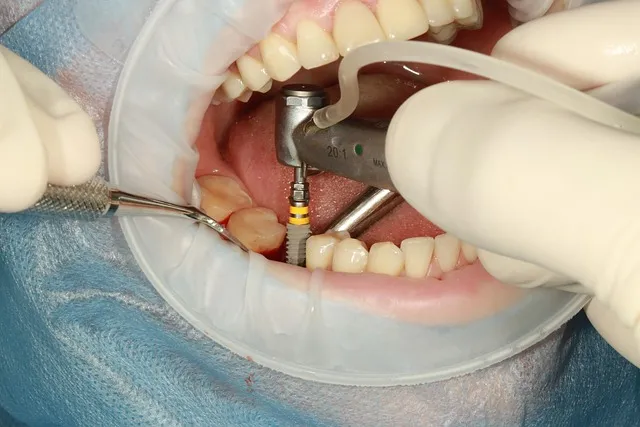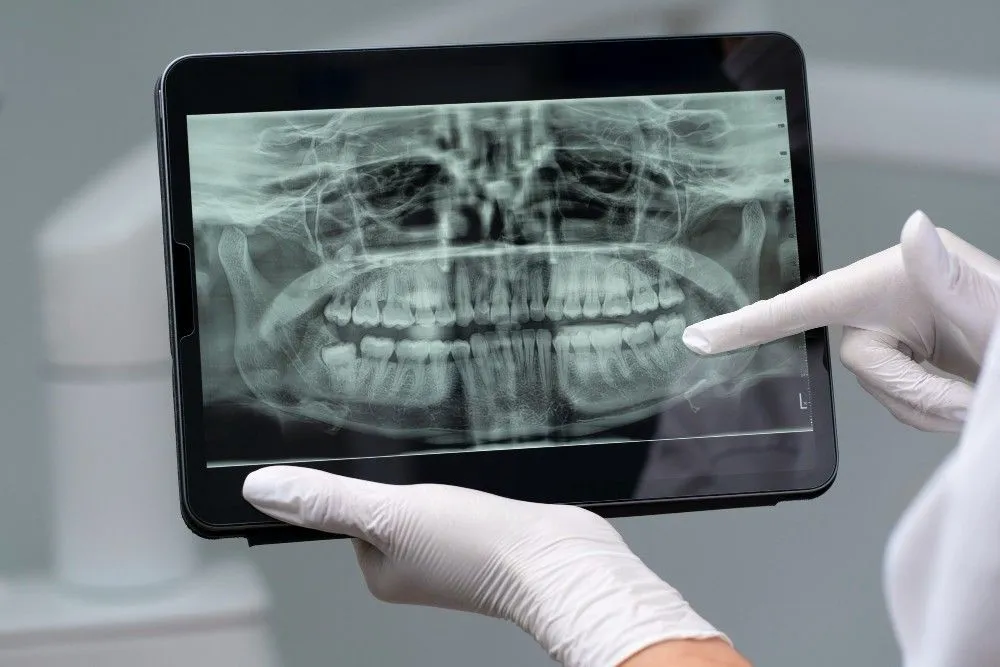A sharp, throbbing pain in your teeth can make even simple tasks unbearable. But what if the real culprit isn’t your teeth at all? Sinus infections cause over 30 million adults in the U.S. to seek medical help yearly—and many don’t realize their toothache is actually sinus pressure.
Let’s break down why this happens and how to relieve tooth pain from sinus pressure effectively. Keep reading.
Why Sinus Pressure Feels Like a Toothache and How to Tell the Difference?
Your upper teeth roots are adjacent to the maxillary sinuses, which are the largest sinus cavities in your face. When these sinus cavities inflame due to an infection, allergy, or blockage, the surrounding nerves and tissues are compressed and lead to toothache-simulating pain. This often confuses sufferers into thinking their teeth are the root of the issue.
The pain often extends to several upper teeth and is exacerbated when bending over or resting.
How to Know If It's Sinus-Related Tooth Pain
Sinus-related tooth pain is often confused with regular toothaches. However, it's typically caused by sinus pressure and congestion affecting the upper teeth. Understanding the symptoms can help you identify if your tooth pain is sinus-related. Watch out for these signs:
- You have pain in multiple upper teeth, not just one
-
The pain usually worsens when you bend over or lie down.
-
Your pain is accompanied by nasal congestion, pressure, or postnasal drip
-
Tooth pain from the sinuses is usually temporary and improves after using decongestants or steam inhalation.
- Your tooth is not sensitive to hot/cold foods (unlike cavities or tooth decay).
If these symptoms sound familiar, your tooth pain is likely from sinus pressure—not a dental issue.
How to Relieve Tooth Pain From Sinus Pressure: 6 Fast Ways to Try
If you’re battling sinus-related toothaches, these science-backed strategies can help.
1. Drink More Water (It’s Not Just Basic Advice)
Staying hydrated thins mucus, making it easier for sinuses to drain. Thick mucus traps bacteria and increases pressure on teeth. Aim for 8–10 glasses of water daily. Add electrolytes if you’re active or feverish. Avoid dehydrating drinks like coffee or alcohol—they worsen congestion.
2. Steam Inhalation: Open Up Blocked Sinuses
Inhaling steam moistens nasal passages, loosens mucus, and reduces inflammation.
-
Boil water, pour into a bowl, and lean over it with a towel draped over your head.
-
Inhale deeply for 5–10 minutes, (repeat 2–3 times daily).
-
Optional: Add 2–3 drops of eucalyptus oil for anti-inflammatory benefits.
3. Try a Saline Rinse to Flush Out Irritants
Nasal irrigation clears allergens, bacteria, and excess mucus.
-
Mix 1 teaspoon of non-iodized salt and ½ teaspoon of baking soda in 2 cups of warm water.
-
Tilt your head sideways over a sink and pour the solution into one nostril. Let it drain out the other.
Caution: Always use distilled, sterile, or boiled (then cooled) water to avoid infections.
4. Apply Warm Compresses to Your Face
Heat improves blood flow, eases muscle tension, and encourages sinus drainage.
-
Soak a clean cloth in warm water, wring it out, and place it over your cheeks and nose.
-
Reapply every 5 minutes for 15–20 minutes. Repeat 3–4 times daily.
5. Use Over-the-Counter Decongestants Wisely
Decongestant sprays or pills shrink swollen nasal tissues, opening airways. However, overusing sprays like oxymetazoline can cause rebound congestion. Stick to 3-day limits for sprays. Oral decongestants (pseudoephedrine) are safer for longer use but may raise blood pressure.
Check with your doctor if you have high blood pressure or heart conditions before using oral decongestants.
6. Elevate Your Head While Sleeping
Lying flat lets mucus pool in the sinuses, increasing nighttime tooth pain. Prop yourself up with extra pillows or a wedge cushion to promote drainage.
Comparing Remedies: Which Works Best?
|
Method |
How It Helps |
Frequency |
|
Hydration |
Thins mucus, reduces pressure |
Continuously |
|
Steam Inhalation |
Opens nasal passages, loosens mucus |
2–3x daily |
|
Saline Rinse |
Removes irritants, clears blockages |
1–2x daily |
|
Warm Compress |
Reduces inflammation, improves drainage |
3–4x daily |
|
Decongestants |
Shrinks swollen tissues |
As directed (3-day max for sprays) |
When to See a Dentist or Doctor
While home remedies help mild cases, persistent symptoms signal a deeper issue. Seek help if you experience:
-
Tooth pain lasting over a week
-
Fever above 101°F (38.3°C)
-
Green/yellow nasal discharge
-
Swollen face or eyes
-
Difficulty breathing
A dentist can rule out abscesses or cavities, while a doctor may prescribe antibiotics for bacterial sinusitis.
How to Prevent Sinus-Related Toothaches
Follow these tips to reduce sinus infection risks:
-
Use a humidifier: In dry places, using a humidifier helps keep your mucus thin. This makes it easier for your sinuses to clear out germs.
-
Install air purifiers: Air purifiers can help you avoid allergens like pollen and dust mites. This reduces your risk of sinus infections.
-
Quit smoking: Smoking can irritate and inflame your sinuses. Stopping smoking helps reduce this irritation and inflammation.
-
Get vaccinated for flu and pneumonia: Flu shots help prevent the flu, which can lead to sinus infections. Similarly, Pneumonia vaccines protect against certain types of lung infections. These infections can also affect your sinuses, so it’s good to be protected.
-
Stay hydrated: Drinking plenty of water keeps your mucus thin. This helps clear sinuses and reduces toothache risk from sinus pressure.
-
Practice good hygiene: Regular handwashing can prevent colds and other infections that might inflame sinuses. Fewer infections mean fewer sinus issues.
-
Use saline nasal sprays: Saline sprays keep your nasal passages moist. This helps prevent blockages that can lead to sinus infections and related toothaches.
Final Thoughts
Now that you know how to relieve tooth pain from sinus pressure, take action before discomfort escalates. Start with hydration and steam, then add saline rinses or compresses. By following these steps, you’ll tackle sinus-related tooth pain head-on. Track symptoms—if they persist beyond 10 days, consult a healthcare provider.
Need urgent relief? Consult with a dentist for a same-day appointment. They will pinpoint whether your toothache is dental or sinus-related and get you back to feeling your best.
Share this guide with friends or family struggling with sinus issues—they’ll thank you later!
Remember: Ignoring persistent symptoms can lead to complications. Stay proactive, and don’t hesitate to seek professional care when needed.
RELATED: How to Get Rid of a Sinus Headache Instantly: 10 Best Remedies
Frequently Asked Questions
Can sinus infections cause permanent tooth damage?
No. The pain is from pressure, not tooth decay. However, chronic sinus issues may require medical intervention.
Is sinus-related tooth pain contagious?
Only if caused by a viral/bacterial infection. Avoid sharing utensils or close contact until symptoms improve.
Do certain foods worsen sinus tooth pain?
Yes. Dairy thickens mucus and sugary foods fuel inflammation. Stick to broths, herbal teas, and anti-inflammatory foods like ginger.
Can sleeping position affect sinus tooth pain?
Absolutely. Sleeping on your back increases congestion. Try side-sleeping with your head elevated.
Do kids get sinus-related toothaches often?
Yes. Children’s sinuses are still developing, making them prone to blockages. Watch for complaints about cheek or jaw pain.
Can allergies cause tooth pain like sinus infections?
Yes. Allergic rhinitis triggers similar inflammation and pressure. Antihistamines like loratadine can help.
Is tooth pain from the sinuses always in the upper teeth?
Mostly. Lower teeth pain likely stems from dental issues, not sinuses.
Reviewed by







